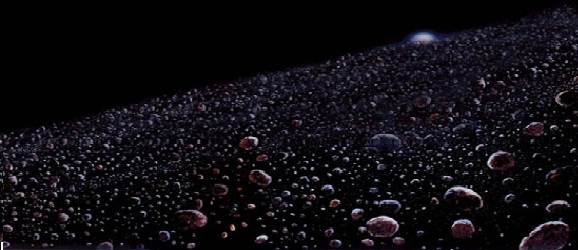Old Star’s Young Appearance No Longer A Mystery
This article is more than 2 years old

For stars, sometimes it’s damned hard to stay looking that young. No, not those overly made-up fame hounds in Hollywood. I’m talking about the big, bulbous fireballs in the sky. The star known as 49 CETI isn’t lying about its age directly, but astronomers have been puzzled as to why it wasn’t showing all the signs of being 40 million years old.
A colossal band of gas surrounds the entire star, which is a feature of stars around 10 million years old. Since its discovery in 1995, the existence of the gas has remained a mystery until now. A team of astronomers reported in a study for the Astrophysical Journal that 49 CETI is enveloped by a disk-shaped region similar our own solar system’s Kupler Belt, which hangs out beyond Neptune. Similar, but 4,000 times more dense and massive than the Kupler Belt. And you thought Houston interstates got clogged.
How does this explain the gas? Picture a paradoxically unimaginable amount of mile-wide (on average) comets — I’m talking trillions — all smashing into each other at high speeds, roughly six times a second, and they’ve been doing that for an estimated 10 million years. Yes, elsewhere in the solar system, comets the size of city blocks are obliterating each other at a higher rate of occurrence than your breathing and blinking. Because the comets are typically younger than those in our solar system, they are likely to contain more carbon monoxide inside of them, which escapes during the collisions and keeps the star covered in a perennial fog.












